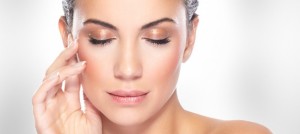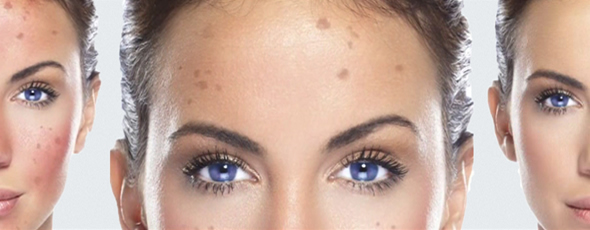MELASMA TREATMENT: They appear most often on the forehead, cheeks, nose, jaw and very often on the upper lip. The main cause is chronic exposure to the sun, usually without protection.
What is Melasma?
Melasma appears as "spots" on the skin, of a lighter or darker brown color. Their size can vary from a small dark spot, to a large discoloration that covers almost the entire face.
They appear most often on the forehead, cheeks, nose, jaw and very often on the upper lip
Why do panades appear
The causes for the appearance of these damages are several:
- The main cause is chronic exposure to the sun, usually without protection.
- Pregnancy, changes in hormone levels (estrogen, progesterone), clearly play a special role in the presence of discoloration.
- Melasma appears to have a hereditary predisposition. A large percentage of patients report the occurrence of similar lesions in other family members.
- Taking medication also predisposes. Taking contraceptives is more often associated. Cortisone, anti-seizure drugs, some antibiotics, isotretinoin, etc. are also to blame.
- Finally, we must mention the causes of these damages and the use of aromatic soaps and cosmetics that can also cause a type of phototoxic melasma.
Which people do panades prefer?
Women have the "misfortune" of developing lesions much more often than men.
In a recent study it is reported that one in four women and one in twenty men can present these unsightly spots.
The most frequently affected ages are between twenty and forty, without of course excluding younger or older ages.
Dark-skinned people of Mediterranean and Asian origin (skin phototype 3 and 4) are more susceptible than Anglo-Saxons, in whom the condition is rare.

Classification
It is very important to know how deep a panada is. This is because this knowledge plays an important role in its treatment.
These damages are classified into three types.
- Type 1: epidermal. The lesion here is superficial, has clear borders, is brown in color and responds well to treatment.
- Type 2: mixed. Melasma of this type has an intermediate depth, dark brown color, not always clear borders and relative response to treatment.
- Type 3: leathery. Here the lesion is deeper, has indistinct boundaries, and is deep dark brown to black in color. This type is difficult to respond to treatment.
Treatment
Melasma is a chronic lesion with periodic remissions and exacerbations. It usually worsens in the summer months. Just as the appearance of melissa is slow, so the cure also seems to be delayed. The gradual disappearance of spots is based on the correct treatment regimen, different for each skin type.
Basic general rules
- Proper and thorough sun protection. The use of broad-spectrum sunscreen with a high protection index, SPF 30 and above, is essential.
- The sunscreen must be applied to all photo-exposed areas of the skin 20-30 minutes before exposure to the sun, for whatever reason we leave our house. In the summer months we need to renew the sunscreen approximately every two hours if we remain exposed to the sun.
- People with melasma can also use make-up with sunscreen. A hat with a brim increases the protection of the face from the sun.
- If possible, it is recommended to discontinue medications associated with melasma.
- Beware of scented soaps and cosmetics that can potentially cause a problem.
- Modern dermatology has at its disposal three categories of treatment, where the doctor will choose the most appropriate one for each individual patient.
- In summary, and without forgetting that "there are no diseases but patients", i.e. everyone must be treated accordingly, we will mention the means of treatment.
Bleaching creams
The creams used in the treatment of melasma are given by the dermatologist and used at home.
Depending on the depth of the damage, simple depigmenting creams or combined depigmenting formulations, which contain hydroquinone, tretinoin, azelaic and kojic acid, in specific concentrations, can be administered.
Hydroquinone is a common substance in the treatment of melasma. It acts with a specialized mechanism, inhibiting the production of melanin in the skin. It can be in the form of a cream, lotion, gel or liquid. Bleaching creams that are given without a doctor's prescription usually have low percentages of this active substance.
Azelaic acid is also effective in treating melasma, without causing serious side effects. If redness, itching or peeling occurs, it usually subsides within about fifteen days.
Tretinoin is another substance used to treat ringworm, usually in combination with hydroquinone and azelaic acid. These combined creams are sometimes called triple creams.
Kojic acid is also considered one of the most active whitening substances, without presenting any particular side effects.
These preparations are used for a period of time determined by the doctor and usually for the most powerful creams we avoid using them in the summer months, because they cause photosensitivity, i.e. skin irritation.
Serums containing vitamin C, in cases of limited surface freckles, also have a depigmentation effect and give a glow to the skin.
During pregnancy and breastfeeding, the use of these substances is prohibited.
Also, keep in mind that in some cases of acne due to pregnancy or related to hormonal causes, they may go away on their own. For this reason, in these cases it is good to be a little patient.
Exfoliating treatments - Peeling
These treatments are done in the doctor's office and will require one or more sessions depending on the damage. The peelings, for which we use salicylic, glycolic and trichloroacetic acid. The choice of substance will depend on the phototype of the patient, i.e. the color of his skin and the type of melasma.
Dermabrasion – DERMABRASION
In this case, special machines are used, where again depending on the damage we can cause micro or macro exfoliation. In dermabrasion we achieve exfoliation and regeneration of the epidermis.
However, we must be aware that the deeper the damage, the deeper and stronger the exfoliation will be, and the chances of irritation, redness, peeling after the treatment are high.
LASER treatments
Different types of lasers such as Fraxel, Alexandrite, Q-Switched Nd Yag have also been used in the treatment of melasma. Depending on the case, a different reaction and response has been observed. In most cases, a combined treatment with whitening medicinal creams is necessary, which are used both as a preparation, but also in the intervals between the laser sessions.

